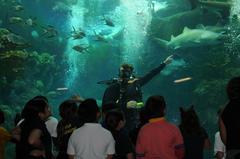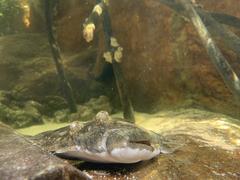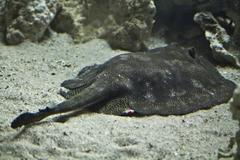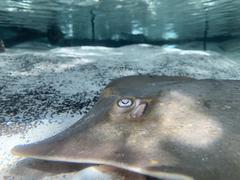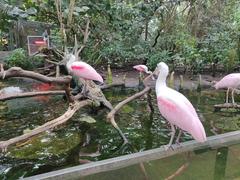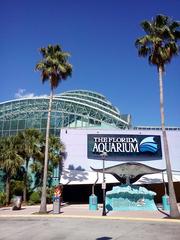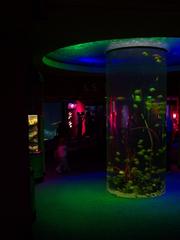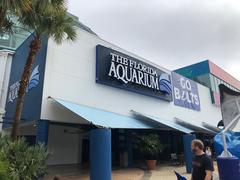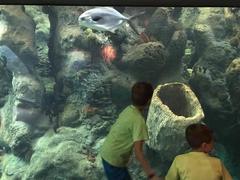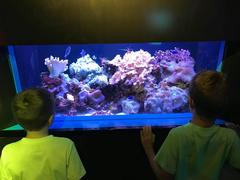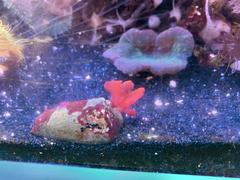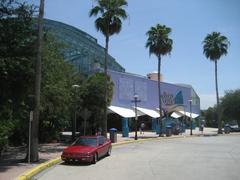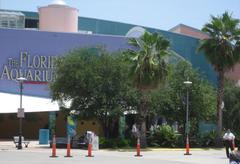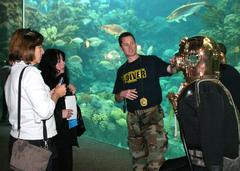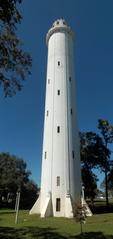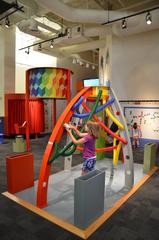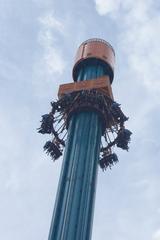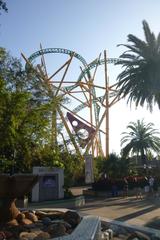
Comprehensive Guide to Visiting Florida Aquarium Tampa United States
Date: 17/07/2024
Introduction
The Florida Aquarium in Tampa is a mesmerizing destination for marine enthusiasts and families, offering an immersive experience into the diverse aquatic ecosystems of Florida and beyond. Since its grand opening on March 31, 1995, this architectural marvel has served as a hub for education, conservation, and community engagement. Conceived in the early 1980s, the aquarium was part of a broader initiative to rejuvenate Tampa’s downtown and waterfront areas (Florida Aquarium History). Designed by the renowned architectural firm Hellmuth, Obata & Kassabaum (HOK), the facility spans 200,000 square feet and showcases sustainable practices, earning accolades for its innovative design (Sustainable Practices). This comprehensive guide will delve into the rich history, significant exhibits, visitor information, and much more to help you make the most of your visit to the Florida Aquarium.
Table of Contents
- Introduction
- History and Significance
- Visitor Information
- Main Attractions and Exhibits
- Educational and Conservation Efforts
- Travel Tips and Nearby Attractions
- Economic and Cultural Impact
- Recognition and Awards
- Future Plans and Expansion
- Frequently Asked Questions (FAQ)
- Conclusion
History and Significance
Origins and Development
The Florida Aquarium, located in Tampa, Florida, opened its doors to the public on March 31, 1995. The idea for the aquarium was conceived in the early 1980s as part of a broader initiative to revitalize Tampa’s downtown area and waterfront. The project was spearheaded by the City of Tampa and Hillsborough County, with the goal of creating a world-class facility that would serve both educational and recreational purposes.
The initial construction of the aquarium cost approximately $84 million, funded through a combination of public and private investments. The design of the building, which spans 200,000 square feet, was inspired by the natural beauty of Florida’s diverse aquatic ecosystems. The facility was designed by the architectural firm Hellmuth, Obata & Kassabaum (HOK), known for their innovative and sustainable designs (Florida Aquarium History).
Architectural Significance
The Florida Aquarium’s architecture is a significant aspect of its identity. The building features a striking glass dome that houses the Wetlands Trail, an exhibit that replicates a Florida mangrove forest. This design not only provides an immersive experience for visitors but also allows natural light to penetrate the exhibit, creating a more authentic environment for the plants and animals.
The aquarium’s design also incorporates sustainable practices. For example, the building’s HVAC system is designed to minimize energy consumption, and the facility uses reclaimed water for its exhibits. These efforts have earned the Florida Aquarium recognition as a leader in sustainable design within the zoo and aquarium community (Sustainable Practices).
Visitor Information
Visiting Hours and Tickets
The Florida Aquarium is open daily from 9:30 AM to 5:00 PM. However, hours may vary on holidays and special events, so it’s always a good idea to check the official website for the most up-to-date information. Tickets can be purchased online or at the door, with prices ranging from $20 to $30 depending on age and membership status. Discounts are often available for groups, military personnel, and seniors.
Main Attractions and Exhibits
Wetlands Trail
The Wetlands Trail is one of the most immersive exhibits at the Florida Aquarium. This exhibit replicates the natural environment of Florida’s wetlands, featuring a variety of native species. Visitors can observe alligators, river otters, and free-flying birds in a lush, tropical setting. The exhibit also includes a mangrove forest, which is crucial for the local ecosystem.
Bays & Beaches
The Bays & Beaches exhibit showcases the diverse marine life found in Tampa Bay and the surrounding coastal areas. This exhibit features a touch tank where visitors can interact with stingrays and other marine creatures. The highlight of this section is the large tank that houses a variety of fish species, including tarpon, snook, and red drum.
Coral Reef
The Coral Reef exhibit is a stunning display of the vibrant and diverse life found in coral reef ecosystems. This exhibit features a 500,000-gallon tank that is home to over 2,000 animals, including sharks, sea turtles, and a myriad of colorful fish. The tank is designed to mimic a coral reef, complete with coral formations and underwater caves.
Journey to Madagascar
The Journey to Madagascar exhibit transports visitors to the unique and diverse ecosystems of Madagascar. This exhibit features a variety of species native to the island, including lemurs, chameleons, and hissing cockroaches. The exhibit also includes a replica of a Malagasy village, providing cultural context to the natural displays.
Waves of Wonder
The Waves of Wonder exhibit is a dynamic and interactive display that explores the wonders of the ocean. This exhibit features a variety of marine species, including jellyfish, seahorses, and octopuses. One of the highlights of this exhibit is the interactive touch tank, where visitors can get up close and personal with sea stars and other marine invertebrates.
No Bone Zone
The No Bone Zone is an exhibit dedicated to invertebrates, showcasing the incredible diversity of animals without backbones. This exhibit features a variety of species, including sea anemones, jellyfish, and octopuses.
Moon Bay
Moon Bay is a unique exhibit that allows visitors to interact with moon jellies in a touch tank setting. The exhibit is designed to provide a calming and immersive experience, with soft lighting and soothing music.
Ocean Commotion
Ocean Commotion is an interactive exhibit that explores the dynamic and ever-changing nature of the ocean. This exhibit features a variety of marine species, including fish, crustaceans, and mollusks.
Conservation Outpost
The Conservation Outpost is an exhibit dedicated to the Florida Aquarium’s conservation efforts. This exhibit features displays about the aquarium’s work in coral restoration, sea turtle rescue, and marine research.
4-D Theater
The 4-D Theater at the Florida Aquarium offers an immersive and educational experience for visitors of all ages. The theater features short films about marine life and conservation, enhanced with special effects such as wind, water, and scents.
Splash Pad
The Splash Pad is an outdoor water play area designed for children. This interactive exhibit features water jets, fountains, and splash zones, providing a fun and refreshing way for kids to cool off.
Behind the Scenes Tours
The Florida Aquarium offers a variety of behind-the-scenes tours that provide an in-depth look at the aquarium’s operations and conservation efforts. These tours include visits to the animal care and veterinary facilities, the coral propagation lab, and the sea turtle rescue center.
Educational and Conservation Efforts
From its inception, the Florida Aquarium has been committed to education and conservation. The facility offers a wide range of educational programs for visitors of all ages, including school field trips, summer camps, and adult education courses. These programs are designed to promote awareness and understanding of marine and freshwater ecosystems, as well as the importance of conservation efforts.
One of the aquarium’s most notable conservation initiatives is its coral propagation program. The Florida Aquarium is a leader in coral research and restoration, working to combat the decline of coral reefs in Florida and around the world. The aquarium’s Center for Conservation, located in Apollo Beach, Florida, is dedicated to the propagation and restoration of endangered coral species. This facility has successfully propagated several species of coral, which are then transplanted to damaged reefs in the Florida Keys and other locations (Coral Conservation).
Travel Tips and Nearby Attractions
Travel Tips
- Best Time to Visit: Weekdays and early mornings are usually less crowded.
- What to Wear: Comfortable clothing and shoes are recommended, as you’ll be walking a lot.
- Photography: The aquarium allows photography, but flash is prohibited in certain areas to protect the animals.
- Parking: The aquarium offers on-site parking for a fee. Alternative parking options are available nearby.
- Accessibility: The Florida Aquarium is wheelchair accessible, with rental options available on-site.
Nearby Attractions
- Tampa Riverwalk: A scenic path that offers beautiful views and connects you to other downtown attractions.
- Ybor City: Known for its rich history and vibrant nightlife, it’s a great place to explore before or after your visit to the aquarium.
- Amalie Arena: Home to the Tampa Bay Lightning and various concerts and events throughout the year.
- Tampa Bay History Center: A museum dedicated to the history and heritage of the Tampa Bay area.
- Ybor City Museum State Park: A historic park that offers insights into the history and culture of Ybor City.
Economic and Cultural Impact
The Florida Aquarium has had a significant economic and cultural impact on the Tampa Bay area. Since its opening, the aquarium has attracted millions of visitors, contributing to the local economy through tourism and job creation. The facility employs over 200 staff members and supports numerous local businesses through partnerships and collaborations.
Culturally, the Florida Aquarium has become a beloved institution in the Tampa Bay community. The aquarium hosts a variety of events throughout the year, including special exhibits, holiday celebrations, and community outreach programs. These events not only provide entertainment for visitors but also foster a sense of community and connection to the natural world (Community Impact).
Recognition and Awards
Over the years, the Florida Aquarium has received numerous awards and accolades for its contributions to education, conservation, and sustainable design. In 2019, the aquarium was awarded the prestigious AZA (Association of Zoos and Aquariums) Accreditation, recognizing its commitment to the highest standards of animal care, conservation, and education. This accreditation is a testament to the aquarium’s dedication to excellence and its role as a leader in the zoo and aquarium community (AZA Accreditation).
Additionally, the Florida Aquarium has been recognized for its innovative exhibits and educational programs. The facility’s Wetlands Trail and Coral Reef exhibits have received praise for their immersive design and educational value (Exhibit Awards).
Future Plans and Expansion
Looking to the future, the Florida Aquarium has ambitious plans for expansion and growth. The facility is currently in the process of developing new exhibits and programs to enhance the visitor experience and further its mission of education and conservation. One of the most anticipated projects is the expansion of the aquarium’s Center for Conservation, which will include new research facilities and public education spaces.
The Florida Aquarium is also exploring opportunities to expand its outreach and impact through partnerships with other organizations and institutions. By collaborating with universities, research centers, and conservation groups, the aquarium aims to advance its conservation efforts and contribute to the global understanding of marine and freshwater ecosystems (Future Plans).
Frequently Asked Questions (FAQ)
Q: What are the Florida Aquarium visiting hours? A: The aquarium is open daily from 9:30 AM to 5:00 PM, with varying hours on holidays and special events.
Q: How much do Florida Aquarium tickets cost? A: Ticket prices range from $20 to $30, with discounts available for groups, military personnel, and seniors. It’s best to check the official website for the most up-to-date pricing information.
Q: Are there guided tours available? A: Yes, the Florida Aquarium offers guided tours that provide an in-depth look at the exhibits and conservation efforts.
Q: Can I host a special event at the Florida Aquarium? A: Absolutely! The aquarium offers event spaces for weddings, corporate functions, and other special occasions.
Conclusion
The Florida Aquarium stands as a vital institution in Tampa, contributing significantly to education, conservation, and the local economy. With its wide array of exhibits, like the immersive Wetlands Trail and the dynamic Coral Reef, the aquarium offers an enriching experience for visitors of all ages. Since its inception, the aquarium has not only fascinated millions but has also led impactful conservation initiatives, such as its pioneering coral propagation program (Coral Conservation). As it continues to evolve, the Florida Aquarium remains dedicated to inspiring and educating visitors about the wonders of the aquatic world. Whether you’re exploring its architectural beauty or participating in one of its many educational programs, a visit to the Florida Aquarium promises to be both enlightening and enjoyable. For the latest updates and to plan your visit, check out their official website.
References
- Florida Aquarium History, 2023, Florida Aquarium https://www.flaquarium.org/about-us/history
- Sustainable Practices, 2023, Florida Aquarium https://www.flaquarium.org/about-us/sustainability
- Coral Conservation, 2023, Florida Aquarium https://www.flaquarium.org/conservation/coral-conservation
